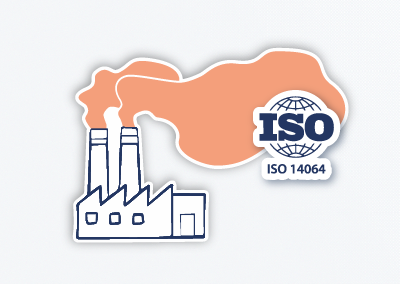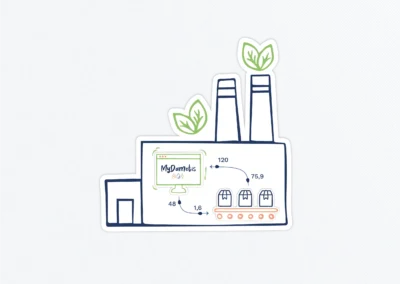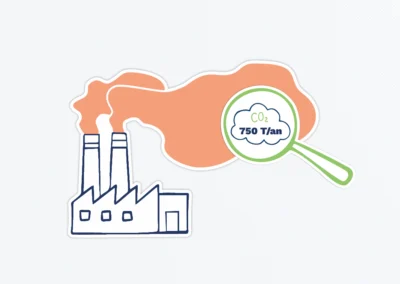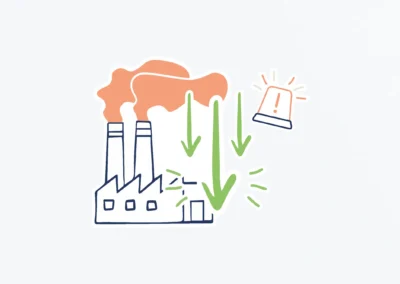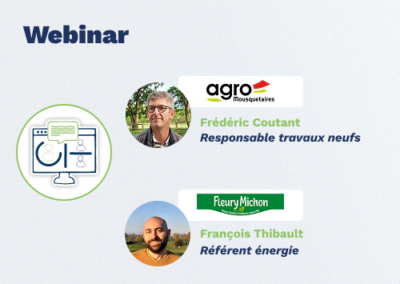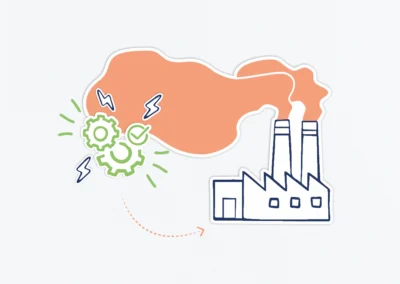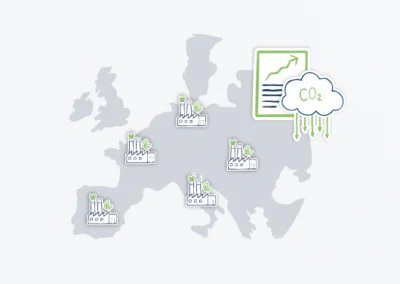
The Net Zero Initiative benchmark revolutionizes carbon neutrality
What is carbon neutrality?
According to the European Parliament: “Carbon neutrality implies a balance between carbon emissions and the absorption of carbon from the atmosphere by carbon sinks” .
The carbon neutrality does not mean the total elimination of greenhouse gas emissions, since carbon sinks help mitigate our impact. However, natural carbon sinks such as soils, flora, fauna and oceans are not sufficient to absorb all our GHG emissions. According to ADEME, only 20% of the GHG emissions produced in France are captured by natural carbon sinks.
To make up for this shortfall, artificial carbon sinks can be created – forest planting and underground CO2 burial (CCS) – but these are very expensive and do not absorb enough carbon to cope with global warming. As long as we fail to absorb all CO2 emissions, global warming will continue unabated, increasing the decline in natural carbon sinks.
For environmental, economic and societal reasons, we need to stabilize temperatures and reduce our greenhouse gas emissions. The EU has therefore set itself the goal of achieving carbon neutrality by 2050.
As part of its commitment to carbon neutrality, the European Union has adopted the “green deal” and the resulting climate law. This new growth strategy should create jobs while improving our quality of life. The European Union has set a binding target of a 55% reduction in net emissions by 2030 compared with 1990, and neutrality by 2050 for all member countries.
At national level, France has affirmed this objective through the 2019 Energy and Climate Law. The Stratégie Nationale Bas Carbone (SNBC) is the action plan designed to guide climate change mitigation policies. The SNBC calls for a 40% reduction in emissions by 2030 and 80% by 2050, with the remaining 20% absorbed by natural carbon sinks.
What is the Net Zero Initiative?
The Net Zero Initiative project was born in 2018 on the initiative of Carbone 4 accompanied by ADEME, the French Ministry of Ecological Transition and 21 other organizations committed to carbon neutrality.
The Net Zero Initiative benchmark aims to limit temperature rises to +1.5°C above pre-industrial levels (1850-1900). This benchmark should enable us to achieve a balance between anthropogenic emissions and absorptions, i.e. CO2 absorptions in natural carbon sinks. The guidelines provide organizations with a methodology for defining and structuring their climate actions. These must meet the objectives set by the Paris Climate Agreement signed at COP21. The idea behind this standard is that every organization must contribute to achieving carbon neutrality.
The standard is based on 5 key principles:
1. The term “carbon neutrality” does not apply to an organization, but designates the global objective of balancing planetary emissions and absorptions.
2. Organizations are actors in carbon neutrality, they can only contribute to it.
3. Emissions reductions and negative emissions representing absorptions are identified differently and calculated separately.
4. The concept of “contribution to global neutrality” has been refined and extended to include the marketing of low-carbon products and services. A distinction is now made between two types of avoided emissions: those that actually contribute to a reduction in emissions, and those that represent a small increase on the initial situation.
5. Carbon finance cannot cancel out a company’s operational emissions. On the contrary, it can trigger avoided or negative emissions.
How to achieve carbon neutrality with the Net Zero Initiative?
To achieve carbon neutrality, two levers of action need to be activated:
- Greenhouse gas emissions, whether fossil or biogenic, must be considerably reduced.
- More natural or artificial wells are needed.
Each organization must therefore ask itself what actions it can take, at its own level, to help reduce anthropogenic emissions and increase carbon sinks.
The Net Zero Initiative is designed to encourage organizations to take action both within and outside their value chain. The strategy is based on three pillars. For each pillar, it is important that the company measures performance, sets achievable, ambitious targets and dynamically steers action.
Net Zero Initiative dashboard
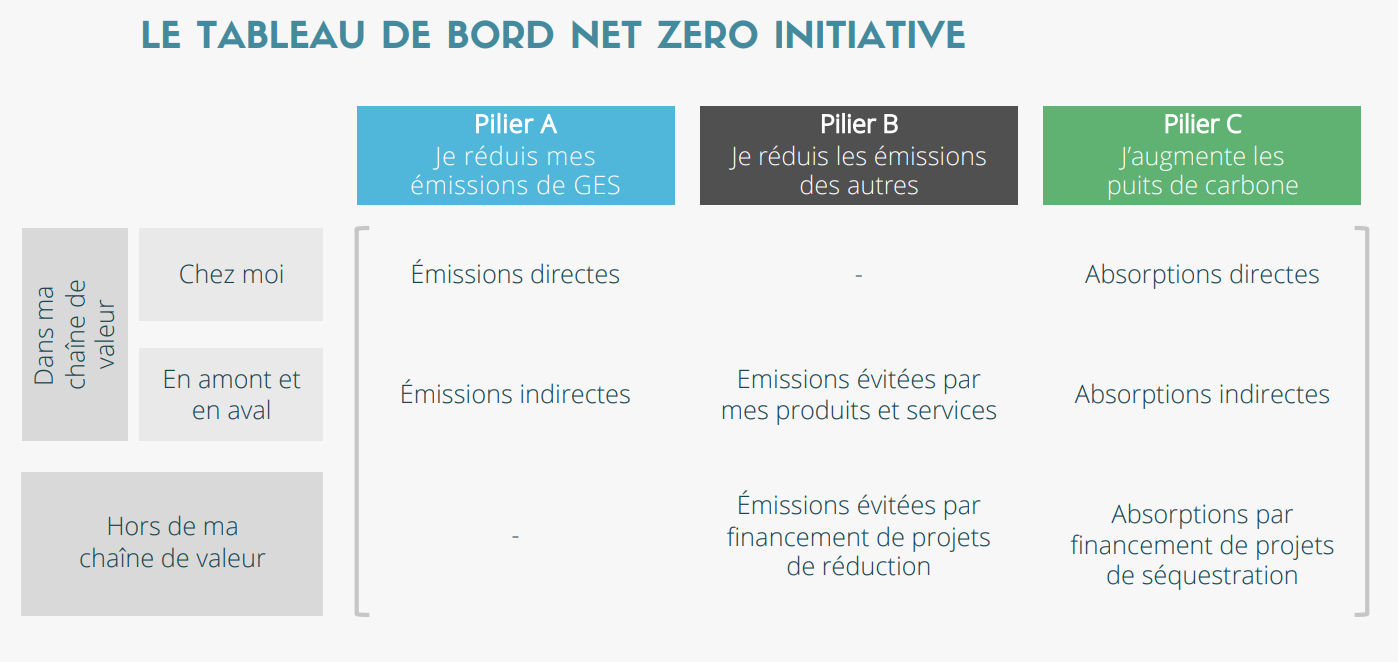
Source: Carbone 4, Net Zero Initiative benchmark
Pillar A: Reduce your own greenhouse gas emissions
The organization must limit its direct (scope 1) and indirect (scopes 2, 3) gas emissions.
TIBC support from PACTE industrie.
Focus on scopes
Scope 1: all direct GHG emissions linked to the activity of the industrial site
Scope 2: all indirect C02 emissions required for site activity but produced outside the industry.
Scope 3: all other indirect emissions produced upstream and downstream of the activity. Upstream emissions mainly include direct emissions from subcontractors and emissions linked to product processing. Downstream, we find GHG emissions linked to the use of products manufactured on the industrial site.
Step 1: Evaluate and quantify your CO2 emissions.
Measuring CO2 emissions must be done regularly to analyze performance and results. Typical reporting frameworks include ISO 14064/14069, Carbon footprint, GHG Protocol
Step 2: Set measurable, achievable objectives.
The objectives can be defined internally, based on an analysis of the various regulations, reference systems and standards, or with the help of an external service provider who is an expert in the field of GHG emissions.
Stage 3: Managing and sustaining performance.
Energy management makes a major contribution to controlling Scopes 1 and 2 emissions. It is also a lever over which companies often have the most control. Performance therefore necessarily involves actions linked to energy efficiency: audits, waste heat studies, ISO 50001 certification, and energy mix opportunity studies.
Dynamic, digital tools must also be put in place.
In the industrial sector, the software, EMS, can be a major ally in ensuring the solutions’ long-term viability by optimizing energy, water, and material waste.
Pillar B: Contribute to reducing greenhouse gas emissions by others
The organization must contribute to reducing the emissions of other organizations. It can do this by :
- Offer its low-carbon products and services as a substitute for less responsible ones within another organization.
- Financing low-carbon projects outside our value chain.
Step 1: Measure emissions avoided by the organization on an annual basis.
Step 2: Set targets for avoided emissions.
Setting avoided emissions targets for each product and service offered, as well as for each low-carbon project financed, will give the organization a clearer vision of the efforts required.
Step 3: Optimize and dynamically manage performance to track emissions reduction outside the value chain.
Pillar C: the company must contribute to increasing absorption wells
The company must contribute to the increase in carbon sinks, and there are two ways of doing this:
- Develop its own carbon sinks (direct absorption) within its value chain.
- Financing sequestration projects outside its value chain.
Step 1: Measure negative emissions annually.
For this pillar, the company must assess its own negative emissions, as well as the negative emissions linked to project financing. To do this, the company can rely on standards such as ISO 14064, GHG Protocol Guidance on Removals, etc.
Step 2: Set absorption targets for your organization and the projects it finances.
Step 3: Manage and optimize your contribution to increasing absorption wells.
The advantages of following the Net Zero Initiative standard in the industrial sector
The Net Zero Initiative benchmark now serves as a framework for companies to contribute to climate change, and is already usable, although it will be improved and further developed over the coming years. This framework marks the beginning of a significant change, if every company implements the actions outlined in the Net Zero Initiative framework. The collective movement will make it possible to achieve carbon neutrality by 2050.
In France today, industry is responsible for more than 18% of greenhouse gas emissions. By following these guidelines, you will be contributing to climate change for a better future. Implementing carbon-neutral actions will also enable you to benefit from various advantages:
- Access low-carbon funds
- Improve your performance
- Cut your bills
- Reduce your risk
- Gain a competitive edge
- Access new markets
Reducing CO2 emissions improves industrial performance by optimizing manufacturing processes, controlling water and energy consumption and reducing environmental effluents. The impact is lower long-term costs and reduced regulatory risks. by complying with constantly evolving environmental standards. Implementing sustainable actions also strengthens a company’s image and reputation, and therefore its competitive edge. Today, actions to reduce CO2 emissions and sequestration can, in some cases, be financed or subsidized.
Experts can help you achieve carbon neutrality and implement low-carbon actions! Whether it’s an energy audit, an energy mix and waste heat opportunity study, a low-carbon investment trajectory (TIBC), training, turnkey work or the implementation of EMS software, we can help you reduce your carbon footprint.









